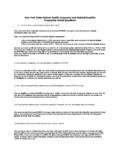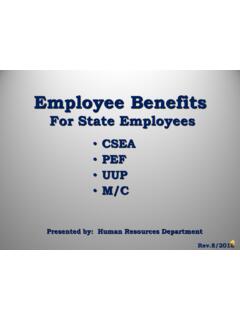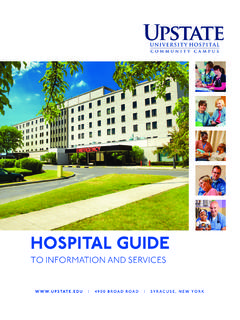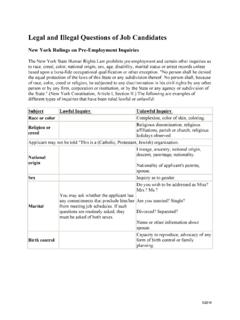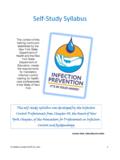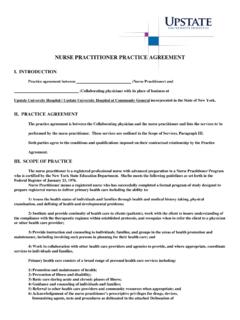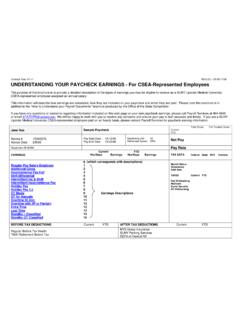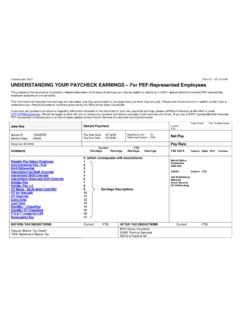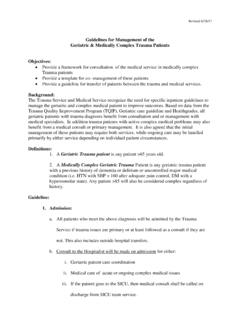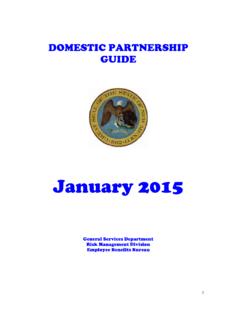Transcription of Health Insurance Frequently Asked Questions
1 Health Insurance Frequently Asked Questions The following are a list of Questions and answers regarding eligible New York State employee's medical benefits . The medical/ Health Insurance benefits (does not include dental and vision benefits ) for which eligible employees are entitled to are determined by their particular bargaining unit (UUP, PEF, CSEA, and PBANYS) or affiliation (M/C). The below is only meant to serve as informational purposes only and does not replace current or updated NYS Department of Civil Service benefit policies, procedures or coverage. For more detailed information, go to the most recent General Information Book (Active Employees): information-book/2014/ny-gib-2014 1.
2 What are the applicable waiting periods for enrolling in Health Insurance coverage? a.) For new or newly benefits eligible employees, the following are initial waiting periods (State employees must provide all of the required proofs within the waiting period or be subject to a late enrollment) please note there will be an applicable extension of such waiting periods if the employee ends up in an unpaid status for part or all of a pay-period: CSEA represented employees (ASU, OSU, and ISU) 42 days PEF represented employees 56 days UUP represented employees 42 days PBANYS represented employees 42 days M/C affiliated employees 56 days b.
3 For enrollments subsequent to initial waiting periods, without a qualifying event, the following waiting periods apply: CSEA represented employees (ASU, OSU, and ISU) first day of the fifth payroll period (approx. 10. weeks). PEF represented employees first day of the fifth payroll period (approx. 10 weeks). UUP represented employees first day of the fifth payroll period (approx. 10 weeks). PBANYS represented employees first day of the fifth payroll period (approx. 10 weeks). M/C affiliated employees first day of the fifth payroll period (approx. 10 weeks). 2.) If I currently am not enrolled in a Health Insurance plan due to other coverage ( through a spouse), and such coverage is lost or no longer available, is there a different waiting period compared to the above?
4 Yes, depending on the reason or qualifying event will determine whether or not a waiting period is required as noted above. 3.) If I select one Health Insurance plan and at a later date decide that particular plan is not right for me, can I. make a change? Yes, once a year (during the month of November) there is an option transfer period. This is the time in which employees can change their Health Insurance option ( change from an HMO to the PPO) for any reason. The change will then take effect on or around the beginning of the New Year. 4.) When can I change my Health coverage level? Employees can enroll for Insurance or change from individual to family at anytime (unless enrolled in the opt-out program*); however, the effective date is dependent upon the reason for the change.
5 If an employee is enrolled in a family plan, they may add new dependents at any time, however such must be done within 30 calendar days of a qualifying event for the coverage to be effective the date of the event. Proper documentation to prove relationship will be required for NYS employees. If done within 30 calendar days of a qualifying event, the change would be effective the date of the event. The employee would need to contact the Human Resources benefits Office (ext. 4-4941). Without prompt notification or without a qualifying event, coverage would start after a 10 week (5 paycheck). waiting period from the date the paperwork is received in HR benefits office.
6 Employees can change from family to individual or cancel Insurance completely-- If your employee premiums are paid on a post-tax basis, you may change at anytime. If your employee premiums are paid on a pre-tax basis, you may change with prompt notice of a qualifying event or during option transfer period only *Employees who participate in the State's Opt-Out Program may re-enroll in NYSHIP during the annual Option Transfer Period. To re-enroll in NYSHIP coverage at any other time, employees must experience a qualifying event, such as a change in family status ( death or divorce) or loss of the other employer sponsored group Health Insurance .
7 Employees must complete a PS-404 and provide proof of the qualifying event within 30 calendar days or they will not be able may re-enroll in NYSHIP until the annual Option Transfer Period. Employees must re-enroll in the Opt-Out Program during the annual Option Transfer Period to continue to remain enrolled and receive a credit in their bi-weekly paycheck. 5.) What is the difference between having my Health Insurance premiums deducted on a pre-tax or post-tax basis? Pre-tax status allows an employee to have their bi-weekly Health Insurance premiums deducted on a before tax basis. Participation in this program may lower your taxes.
8 However, it will limit some types of voluntary changes (unless you have a special enrollment right or other qualifying event). You cannot make changes to your plan outside of the option transfer period in the fall which allows employees to change Health Insurance options for the next calendar year: from a NYSHIP HMO to The Empire Plan, from The Empire Plan to a NYSHIP HMO, from one NYSHIP HMO to another NYSHIP HMO that has a NYSHIP service area where you live or work, from the Empire plan or a NYSHIP HMO to the Opt-out program, or from the Opt-out program to the Empire plan or a NYSHIP HMO, cancel coverage or change from family to individual coverage.
9 Please note: Pre-tax status will also reduce your social security income. Post-tax status means that you will pay taxes on your bi-weekly employee premium amounts, but it will allow you to make voluntary changes in your plan outside of the option transfer/open enrollment period. 6.) What is considered a qualifying event? Under the Internal Revenue Service (IRS) rules, an employee may change their Health Insurance deductions during the plan year only after one of the following pre-taxed-qualifying events: You have a change in family status ( marriage, birth, death, legal separation, divorce, only dependent child's attaining the maximum age for coverage up to age 26 years).
10 You are enrolled in an HMO and no longer live or work in that HMO's service area and you must choose another HMO or the Empire Plan (PPO). Your spouse loses coverage due to termination of employment and you apply for coverage for your spouse. You first become eligible for Health Insurance coverage after the beginning of the tax year. Your employment terminates or you retire. Your spouse has a change in employment status which results in either acquiring or losing eligibility for Health Insurance coverage, or enrolls during an open enrollment/option transfer period. You receive a divorce/legal separation and are required under a court order to provide Health Insurance coverage for your eligible dependent children and/or legally separated spouse.
